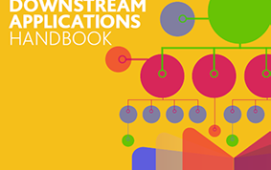ICE Benchmark Administration (IBA) will publish results of a three-month test of ICE LIBOR on the ICE website this Saturday March 17, 2018. The test is part of the evolution of the benchmark and ran from September 15 to December 15, 2017, during which time all 20 LIBOR panel banks were required to make additional LIBOR submissions using the waterfall methodology to the same production standard as, and in parallel with, their existing LIBOR submissions.
IBA, a subsidiary of Intercontinental Exchange (ICE), became the administrator of LIBOR in February 2014. Since then, it has invested in the benchmark and put in place new governance, oversight, technology and controls. Its goal is to evolve LIBOR and be able to publish, in all market circumstances, a wholesale funding rate anchored in panel banks’ unsecured, wholesale funding transactions to the greatest extent possible.
IBA has calculated LIBOR using submissions made under the waterfall methodology for each of the 35 LIBOR currency and tenor pairs for every applicable London business day of the testing period. The calculations apply the same trimmed arithmetic mean approach used to calculate LIBOR as it is currently published.
Following input from the LIBOR Oversight Committee and consultation with stakeholders from around the world, IBA developed the final ICE LIBOR output statement setting out a single LIBOR definition and a more standardised, transaction-data driven methodology for submissions in place of the existing LIBOR submission question. Each panel bank’s submissions in response to the output statement are determined through use of the waterfall methodology, which uses eligible transaction data where available, transaction-derived data otherwise, and, if neither is available, market data-based expert judgement.
IBA continues to work on the evolution of LIBOR, with the intention of transitioning panel banks from the existing LIBOR methodology to the waterfall methodology, subject to agreement from the LIBOR Oversight Committee and other approvals, and in the absence of regulatory objection. IBA expects to make a further announcement before commencing the transition to the waterfall methodology, if conditions have been satisfied.
Subscribe to our newsletter




